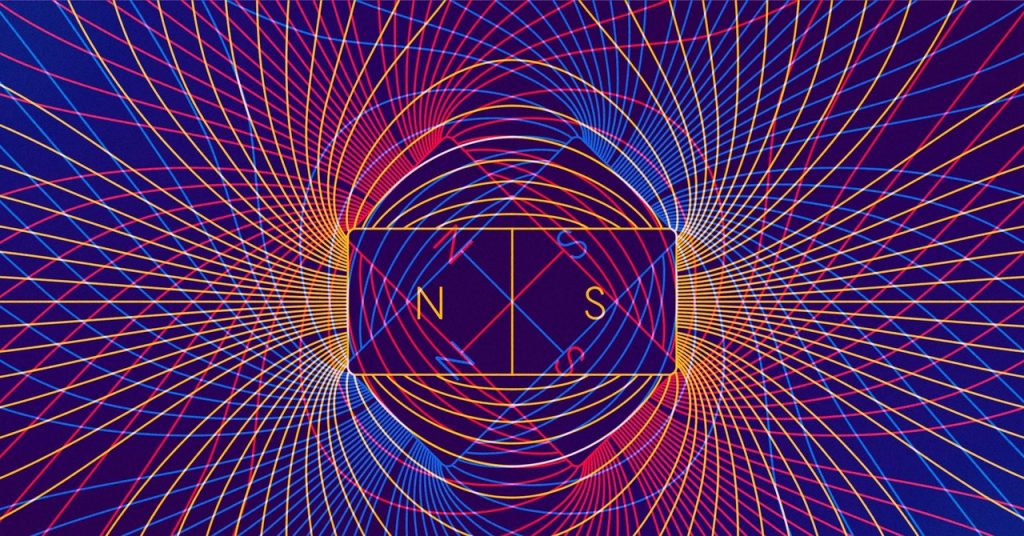A Novel Form of Magnetism Discovered in Engineered Material
Researchers have uncovered a new type of magnetism in a specially designed material, challenging the conventional understanding of how magnetism arises in solids. The findings, published in the journal Nature, shed light on the intricate behavior of electrons in engineered lattices and could potentially lead to groundbreaking applications in superconductivity.
Exploring the Moiré Material
The team, led by physicists at ETH Zurich, investigated a moiré material—a lattice formed by stacking two layers of atomically thin materials with a slight twist. By applying weak magnetic fields and varying the voltage across the material, they observed an unusual magnetic response that defied the expectations of standard Nagaoka ferromagnetism.
The Role of Electron Movement
The key to understanding this novel magnetism lies in the movement of electrons within the lattice. As the number of electrons in the moiré lattice exceeded the number of lattice sites, the extra electrons delocalized and formed fleeting pairs called doublons. These doublons could only spread out if the surrounding electrons had aligned spins, leading to the formation of localized ferromagnetic regions.
Crucially, Nagaoka theorized that this effect would also work when a lattice had fewer electrons than lattice sites, which wasn’t what the researchers saw. But according to the team’s theoretical work—published in Physical Review Research in June ahead of the experimental results—that difference comes down to the geometric quirks of the triangular lattice that they used versus the square one in Nagaoka’s calculations.
Implications and Future Directions
While practical applications of this kinetic ferromagnetism are still far off, requiring extremely cold temperatures, the discovery opens up exciting possibilities for studying electron behavior in solids. The researchers, in collaboration with theoretical physicists Eugene Demler and Ivan Morera Navarro from the Institute for Theoretical Physics, aim to explore whether similar kinetic mechanisms could be harnessed to manipulate charged particles into pairing up, potentially paving the way for a new mechanism of superconductivity.
“I’m not saying that this is possible yet,” he said. “That’s where I want to go.”
Original story reprinted with permission from Quanta Magazine, an editorially independent publication of the Simons Foundation whose mission is to enhance public understanding of science by covering research developments and trends in mathematics and the physical and life sciences.

4 Comments
Groundbreaking? More like reality-bending, welcome to the magnetic renaissance!
Magnets just got even more magnetic, if you can believe it!
Who knew magnets still had secrets to spill? Mind-blowing!
This discovery throws the whole “opposites attract” theory into a frenzy, doesn’t it